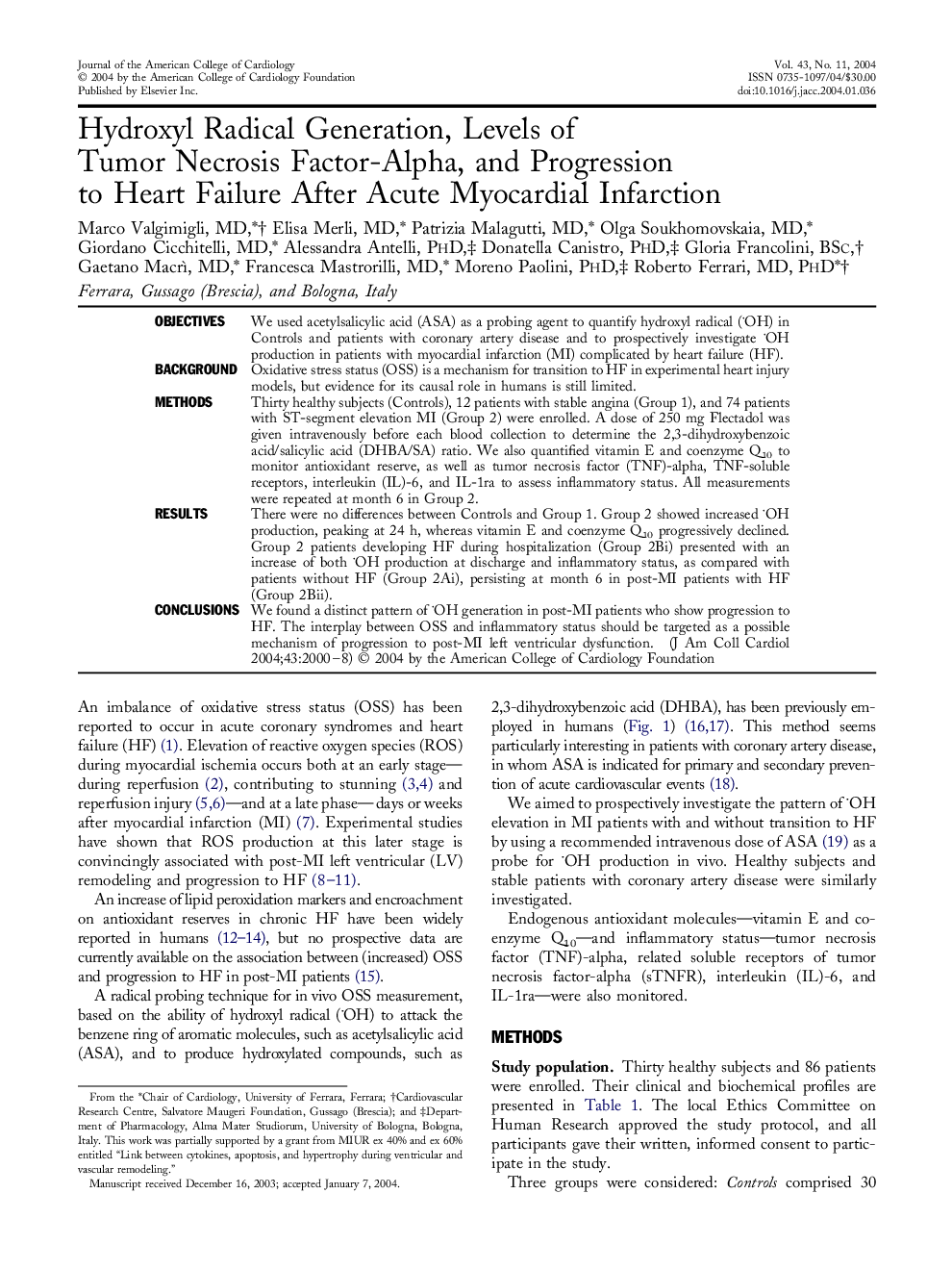| کد مقاله | کد نشریه | سال انتشار | مقاله انگلیسی | نسخه تمام متن |
|---|---|---|---|---|
| 2954750 | 1577569 | 2008 | 9 صفحه PDF | دانلود رایگان |

ObjectivesWe used acetylsalicylic acid (ASA) as a probing agent to quantify hydroxyl radical (OH) in Controls and patients with coronary artery disease and to prospectively investigate OH production in patients with myocardial infarction (MI) complicated by heart failure (HF).BackgroundOxidative stress status (OSS) is a mechanism for transition to HF in experimental heart injury models, but evidence for its causal role in humans is still limited.MethodsThirty healthy subjects (Controls), 12 patients with stable angina (Group 1), and 74 patients with ST-segment elevation MI (Group 2) were enrolled. A dose of 250 mg Flectadol was given intravenously before each blood collection to determine the 2,3-dihydroxybenzoic acid/salicylic acid (DHBA/SA) ratio. We also quantified vitamin E and coenzyme Q10to monitor antioxidant reserve, as well as tumor necrosis factor (TNF)-alpha, TNF-soluble receptors, interleukin (IL)-6, and IL-1ra to assess inflammatory status. All measurements were repeated at month 6 in Group 2.ResultsThere were no differences between Controls and Group 1. Group 2 showed increased OH production, peaking at 24 h, whereas vitamin E and coenzyme Q10progressively declined. Group 2 patients developing HF during hospitalization (Group 2Bi) presented with an increase of both OH production at discharge and inflammatory status, as compared with patients without HF (Group 2Ai), persisting at month 6 in post-MI patients with HF (Group 2Bii).ConclusionsWe found a distinct pattern of OH generation in post-MI patients who show progression to HF. The interplay between OSS and inflammatory status should be targeted as a possible mechanism of progression to post-MI left ventricular dysfunction.
Journal: Journal of the American College of Cardiology - Volume 43, Issue 11, 2 June 2004, Pages 2000–2008